Iceland does not only boast a range of very diverse landscapes, all spectacular in their own way, but it also makes for a paradise for all hikers and outdoor lovers alike, from famous trails and treasured National Parks to more remote locations. At Hey Iceland, we are about to launch our exciting latest project, one that we believe will complement our current product range and be very helpful on your next Icelandic adventure. Until then, let’s prepare and make ourselves ready for a successful hiking trip to Iceland.
Gather information about the hiking terrain
Failing to plan is planning to fail.

Regardless of whether you are hopping on a day hike or a multi-day trek, take advantage of the time remaining before your trip to build your travel plan. Arm yourself with a detailed hiking map to download in your device or use a hiking app before you head out into the untouched landscapes of Iceland.
Best-practice route plans should include:
- Day trips
- Distance to hike each day
- Estimated hiking times
- Elevations details
- Accommodation information
- Contingency plan just in case
Also don’t aim too high and plan reasonable distances each day, in accordance with your hiking experience and capabilities, and physical condition at the time of the hike. A reasonable pace for most hikers would be around 3,5 kilometers per hour.
Keep track of the weather conditions
When in doubt, abstain.
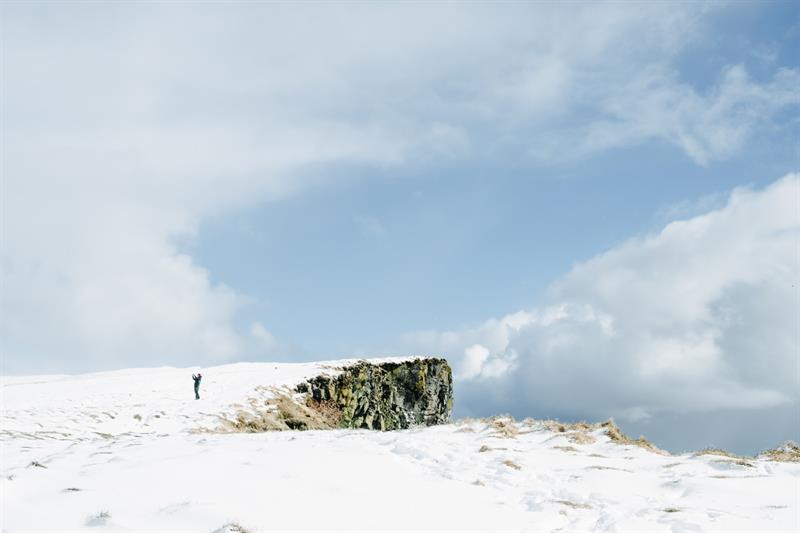
Average Seasonal Conditions
The second step of planning is to gather information about the average seasonal conditions. Just as you would keep an eye day after day on road conditions, consider key metrics such as average temperature, sunshine duration, precipitation and wind forecast. For a complete picture, we recommend you visit the website vedur.is, the Icelandic Meteorological Office.
Iceland does not fall in the category of warm places – and hopefully will never, but the push of the warm Gulf Stream results in rather moderate temperatures all year round. In the Summer, it is usually a bit warmer in the North and the East, while in winter, these regions easily get the highest amounts of snow, along with the Westfjords.
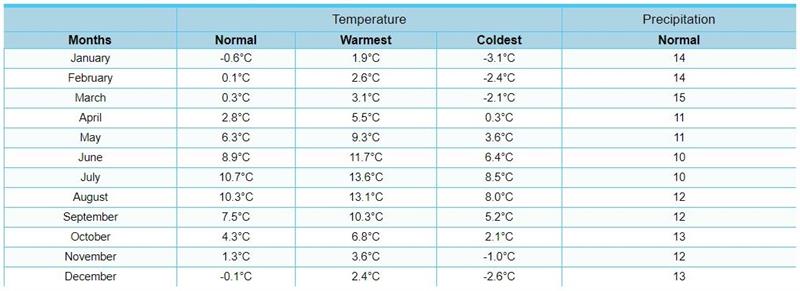
Average Temperature and Precipitation per month in Iceland - © WMO
Note that the difficulty level of a trail can considerably fluctuate with the weather and the season. Hiking in winter in Iceland is possible but requires extreme care and appropriate safety precautions, in terms of equipment and upstream preparation. Also good to keep in mind that even though a trail is marked, visibility can get so poor that it becomes impossible to see from one stick to another.
Day Length
Due to Iceland’s proximity to the Arctic, the day length is another key factor to consider for outdoor recreation. From May to July, hikers can enjoy the longest hikes during the bright Summer nights and experience the Midnight Sun, when Iceland turns into an enchanting sleepless country.
On the other hand, winter hikers should carefully consider the short day length and plan their route accordingly, as the sun rises around 11am and barely gets over the horizon before it sets just four hours later. Darkness comes much faster than one could think. There again, we observe significant variations between the North and the South, so always ensure that your hiking plans are consistent with the amount of effective daylight you can expect.
And remember, darkness might deprive you of long hikes but it is often alleviated by the otherworldly Northern Lights :)
Dress accordingly and pack the right equipment
You need special shoes for hiking, and a bit of a special soul as well.
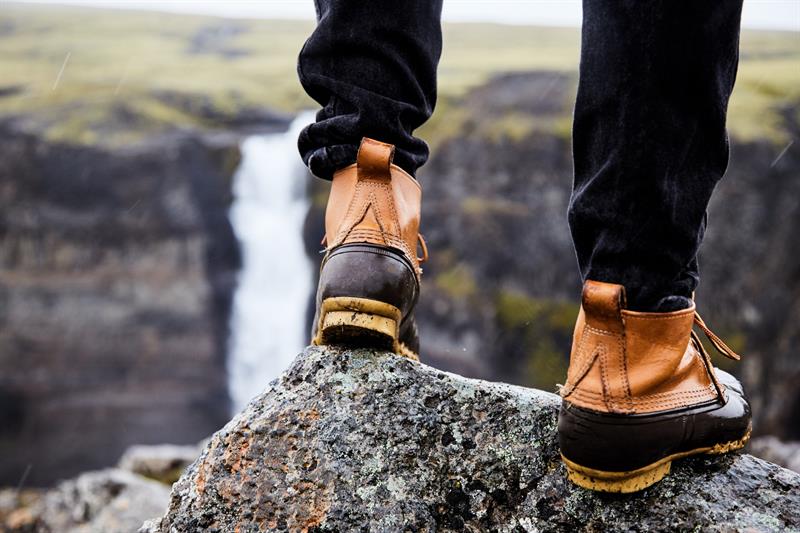
The one thing to remember about Iceland’s weather is that it is variable and unpredictable all year around. The day can look calm and still by the sea and yet the wind raging in the mountains. Likewise, you can experience different weather patterns in the span of your hike. In this context, you want to dress smart to be able to make quick adjustments based on changes in the weather and your activity levels, in order to stay comfortable.
Check our Top 10 Things to pack for a hiking trip in Iceland, where we go over the ideal hiking equipment, based on the outdoor clothing layering system:

Adapt your gear to the season you are visiting and the trail. Winter hikers will make a good use of crampons, ice axes or headlights, while hiking poles can come in handy all year round. Do not underestimate the value of a map, compass and a GPS, on the assumption that you know how to use them.
Spend some time organizing your backpack wisely, so you don’t end up carrying useless items and suffer from back pain. The heaviest items should always be placed closest to the back for a better weight distribution and total weight should not exceed 18 kilos.
Pack enough snacks and water for the hike, and refill as you like with pure water coming down with the rivers, naturally filtered and safe to drink from.
Follow the safety-first principles
If you don’t think it’s safe, it probably isn’t.
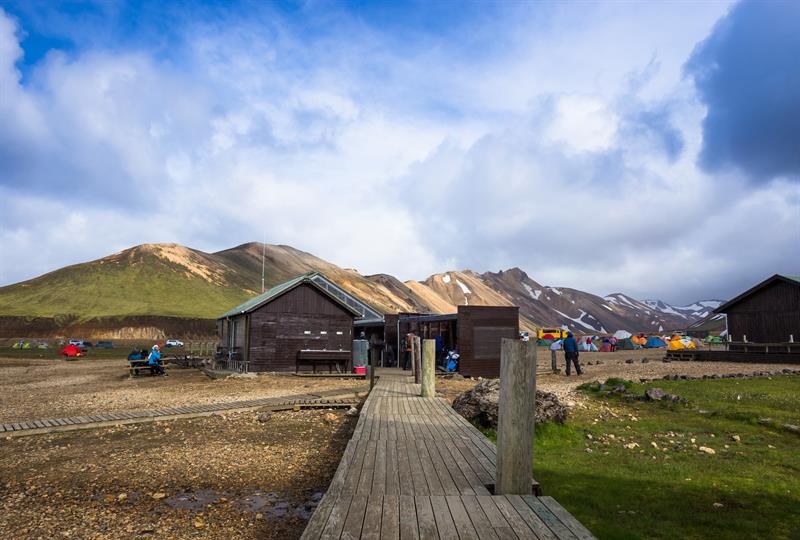
Because we care about you, we want to remind some safety principles to follow for an enjoyable and secure hiking experience.
Before the hike
- Inform someone trustworthy of your travel plans (planned route, when you plan to return, etc.) or leave it on safetravel.is , by the Icelandic Association for Search and Rescue.
- Download the application called 112 Iceland for added safety. The app allows you to check in or leave your location so if something happens, the Rescue team can react faster - and to call for help in case of emergency, even if your phone shows no signal.
- Make sure your cell phone is fully charged when you hit the trail in the morning and have an extra power bank with you.
- Know your and your group’s skill level and physical capabilities and choose trails wisely.
- Be prepared for sudden weather changes and check the daily weather forecast and possible warnings before you start your hike each day. If the weather is poor, postpone your trip. Better to be safe than sorry!
- Make sure you know how to use a map, GPS, and compass when planning to hike in remote locations.
- Always have a first aid kid, and survival blanket in your backpack.
During the Hike
- Always keep an eye on your hiking companions and never leave one behind.
- Listen to your body, if you feel you are getting repetitive strain injuries, don’t go further and try to relieve them, before you get injured badly.
- Stick to the travel plan that was arranged before you left. If you change your travel plan, notify of the changes on the 112 Iceland App.
- Take the habit to always write your name and the date in guest books.
You can also choose to join a guided hike, and take advantage of the knowledge and experience of our professional guides to lead you on a fun and safe hike!
Take the Icelandic pledge
Look deep into Nature, and then you will understand everything better.
Because the Earth is what we all have in common and we owe everything to Nature, be a good citizen on the Icelandic trails, honor rules and show respect to your fellow travellers. Minimize your impact, take the Icelandic pledge now!
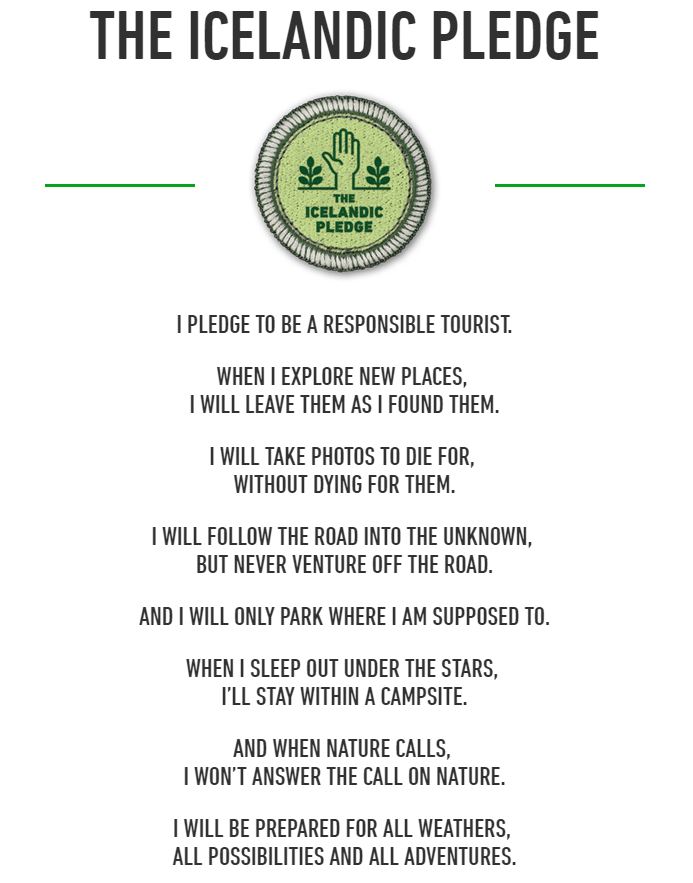
The Icelandic Pledge - © Inspired by Iceland